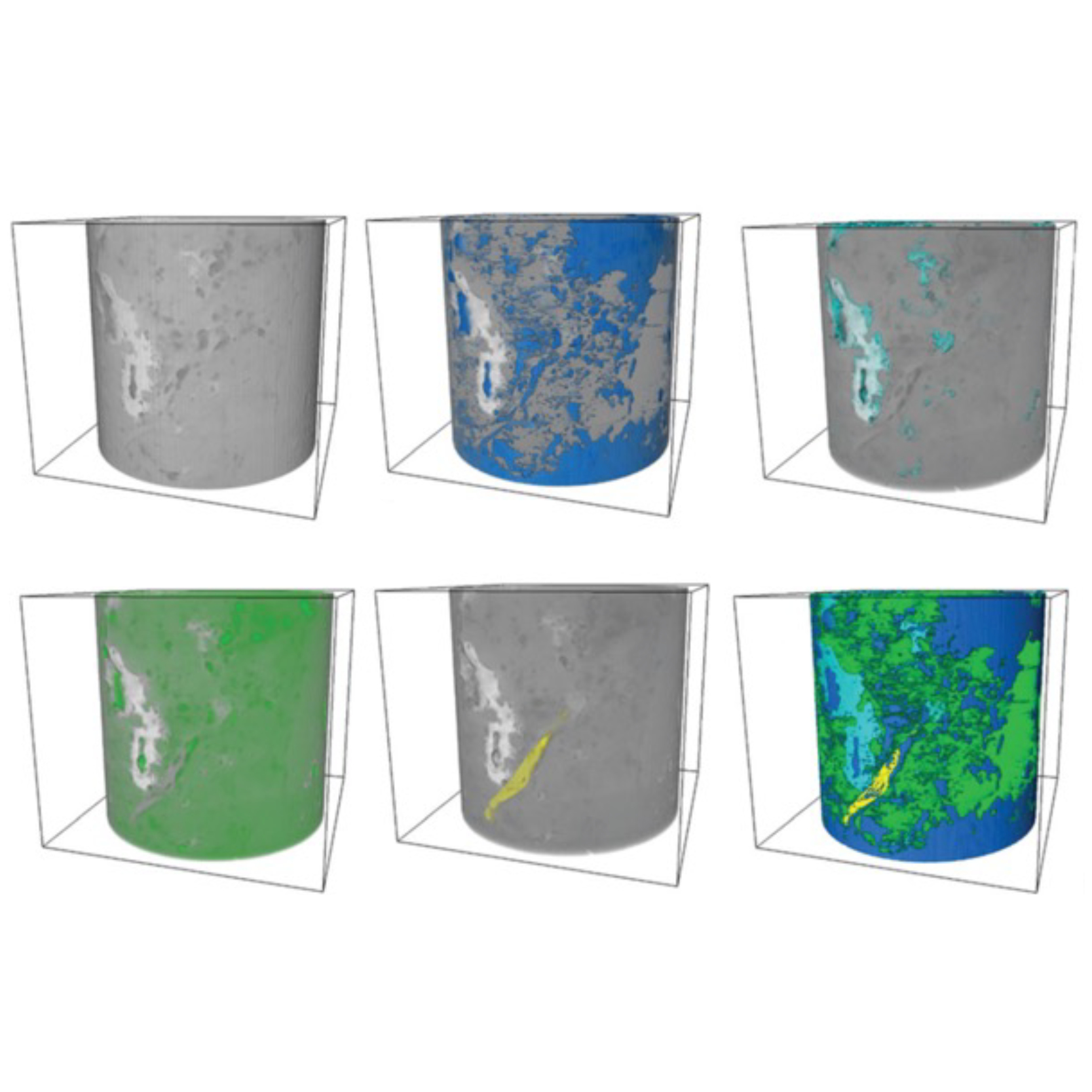
3D Microstructure of Soft Magnetic Elastomer Membrane
Soft magnetic elastomer membranes enable fast magnetic actuation under low fields. In our project, we… Read More
Events & Resources
News, Events and Resources from NXCT Partners
We use Lab-DCT to interrogate sub-grain orientations in olivine relative to the melt inclusions they host to better understand MI entrapment mechanisms and identify any evidence of post-entrapment alteration–leaving a structural fingerprint in the host crystal–of the deep mantle geochemical signature thought to be recorded in MIs.
Mantle source compositions and the volatile phases they supply to the magmatic system can exert control on eruption style.Heterogeneous mantle source compositions of erupted magmas and their initial volatile concentrations are recorded in olivine-hosted melt inclusions (MIs).The MV4D project will trace mantle source heterogeneities in MIs to understand the impact of their volatile signatures on eruption style over the course of two well-documented recent eruptions from Iceland and La Palma. To confidently interpret these records as tracers of deep mantle-source heterogeneities we must understand their mechanisms of entrapment and know their original geochemical signatures are preserved. Many entrapment and post-entrapment processes are preserved in the host crystal as a structural fingerprint–lattice misorientations, fractures, sub-grain boundaries–revealed in three dimensions through LabXCT & DCT.We took 5 olivine crystals with different MI populations and structural features, with different“interfering”phases e.g.,external glass, embayments and oxides and collected semi-simultaneous XCT and DCT data sets to image and interrogate the relationships between the MIs and their host olivines. We were able to successfully map the orientations of olivine crystals relative to their MI populations.The NXCT facility supported this work through access to their Zeiss Xradia520Versa with DCT and the support and expertise of NXCT staff who helped us develop our analytical recipe. Collection of these data sets in 3D is critical to our understanding of the relationships between the inclusions and their hosts which are inherently 3-dimensional and must be explored as such.Our analyses here further highlight the possibilities for use of LabDCT to interrogate more complex crystal systems(and imperfect samples)important for petrological studies and wider earth and environmental sciences research.Our research at NXCT will be complemented by 2D diffraction experiments at DiamondLight Source where we will examine finer scale structural features.
“This research will be the dawn of a new dimension in palaeobiological studies, enhancing our ability to reconstruct an accurate model of the chemistry and mechanical properties of colour producing structures, associations to the ubiquitous pigment melanin and functionality throughout evolution.”
Dr Nidia Álvarez-Armada, Marie Curie Fellow at The University of Manchester



Soft magnetic elastomer membranes enable fast magnetic actuation under low fields. In our project, we… Read More

Nowadays, the increasing capability of micro-manufacturing processes enables the manufacture of miniature products with extremely… Read More

Injection of CO2 into shale reservoirs to enhance gas recovery and simultaneously sequester greenhouse… Read More